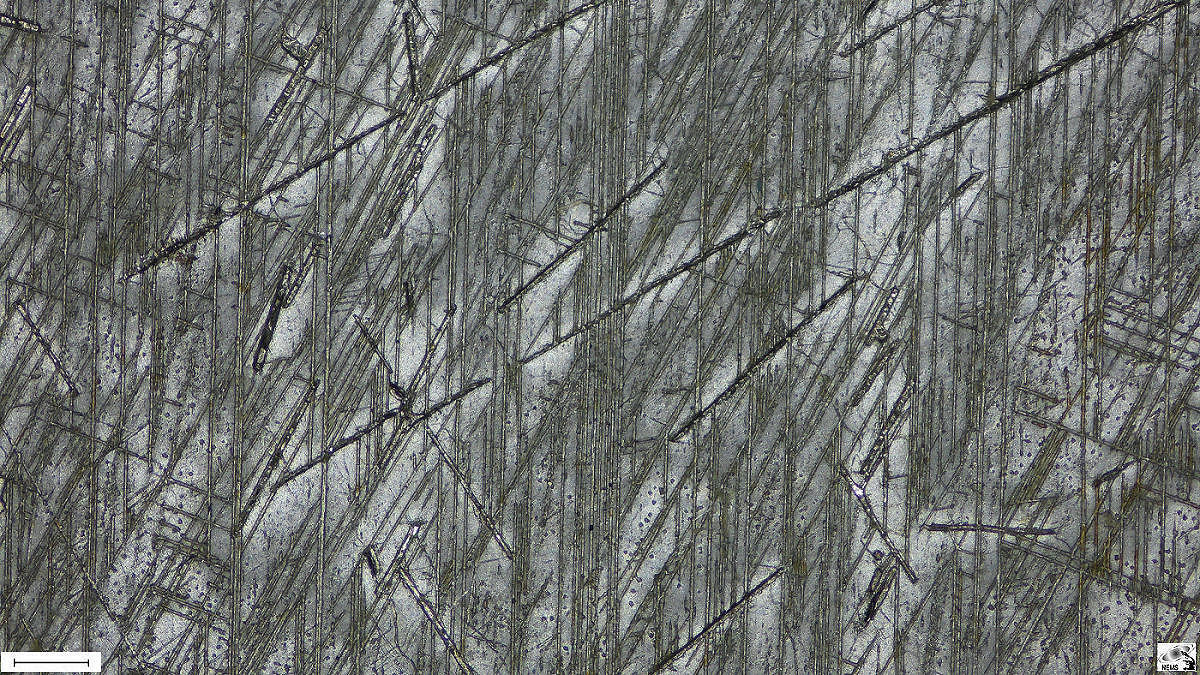|
||
Neumann lines and Rhabdites |
| Listing of Structures |
| Back...Next |
| Meteorite - Uwet, IIAB Iron |

| Figure 2. Scale bar 60 µm. |
| Neuman lines and rhabdites. Uwet, IIAB Iron. |
| Neumann lines are fine
patterns of parallel lines seen in the kamacite phase of many hexahedrite iron
meteorites. These lines indicate shock-induced deformation of the kamacite
crystal, typically caused by impact events on the meteorite's parent body (they
can also occur when impacting the Earth's atmosphere). Discovered in 1848 by Johann G. Neumann, they are considered secondary structures. Rhabdites are iron-nickel phosphide minerals found within the kamacite groundmass. They form during the meteorite's parent body's primary cooling and crystallization processes. As the meteorite cools, the iron-nickel phosphide minerals crystallize from the melt and become embedded within the kamacite. Prismatic rhabdites are a specific form of iron-nickel phosphide mineral. These rhabdites have a prismatic shape, are elongated, and have a crystal structure that resembles a prism. They are often fracture-free, which distinguishes them from plate-like rhabdites that can have fractures. Rhabdites are secondary structures typically found within the kamacite groundmass. For good reason, schreibersite is often associated with rhabdites - they share the same chemical composition, (Fe,Ni)3P The differences lie in their crystal forms and the conditions under which they form. Schreibersite forms larger, more massive crystals when the cooling rate is relatively slow, allowing the atoms to migrate and form larger, well-defined crystals. When the cooling rate is faster, rhabdites form as exsolution products from the metal matrix. They are smaller, needle-like, or prismatic crystals of schreibersite. While both schreibersite and rhabdites share the same chemical composition, their differences lie in their crystal forms and the conditions under which they form. |
| Listing of Structures |